

Max Davies
2025 Lexus NX450h+ F Sport review
1 Month Ago
BYD is aiming straight at the Mitsubishi Outlander PHEV with its new Sealion 6, and it may just have a headshot on its hands...
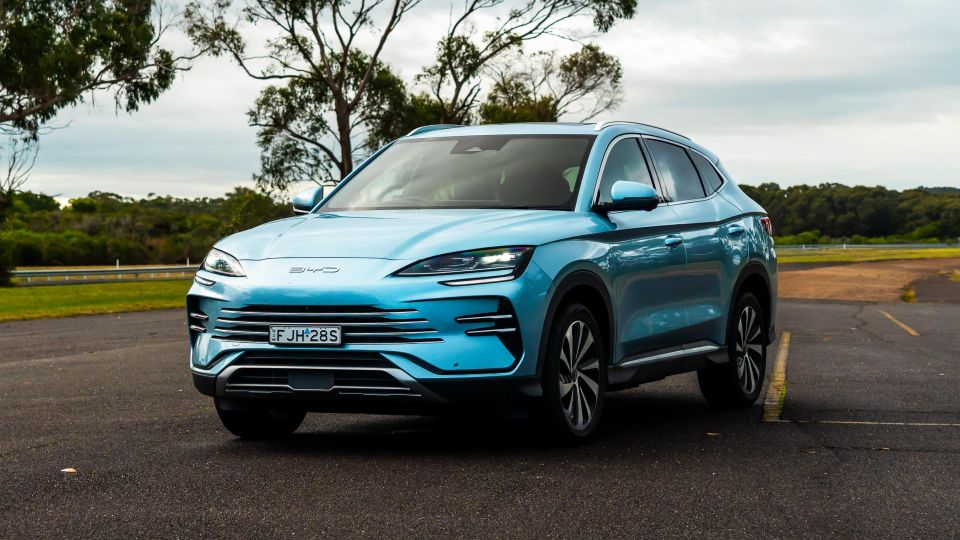
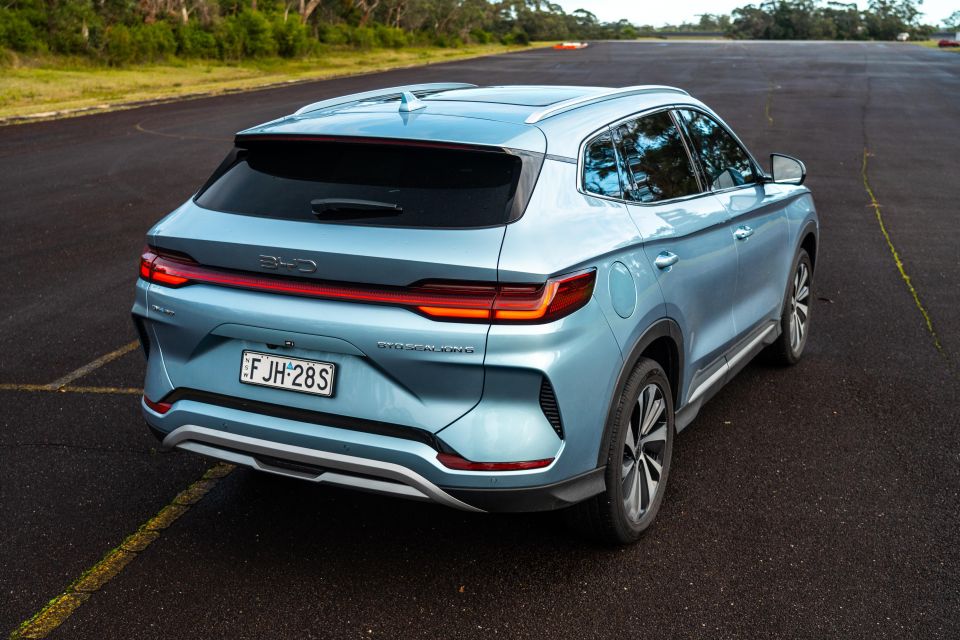

Marketplace Editor

Marketplace Editor


Marketplace Editor

Marketplace Editor
Quickly see how this car stacks up against its competition. Select any benchmark to see more details.
Where expert car reviews meet expert car buying – CarExpert gives you trusted advice, personalised service and real savings on your next new car.
BYD is looking to make a splash in Australia with its new electrified mid-size SUV.
The 2024 BYD Sealion 6 is the electrified specialist’s first stab at Australia’s most popular new vehicle segment, offering a plug-in hybrid (PHEV) alternative to the Toyota RAV4 Hybrid and Nissan X-Trail e-Power, as well as the conceptually similar Mitsubishi Outlander Plug-in Hybrid EV.
Despite being a PHEV the Sealion 6 is competitively priced, starting for similar money to a mid-spec RAV4 Hybrid or Hyundai Tucson Hybrid – well under the starting price of the cheapest Outlander PHEV.
It’s the brand’s first plug-in hybrid in Australia, but BYD has been playing in this space for years at home. The Sealion 6 quotes some strong numbers: 80-90 kilometres of EV driving, and a combined driving range of over 1000 kilometres on a full charge and full tank of fuel.
Those are some big claims, and really none of the BYD’s competitors have been able to achieve as much…

After driving a set of pre-production cars at the Lang Lang proving ground, we got a week with the Sealion 6 on public roads to see if my positive initial drive would be validated in the real world. You can also watch Paul Maric’s full video review (shot at said Lang Lang facility) above.
How did it fare? Read on to find out.
The range kicks off from $48,990 plus on-road costs, with the flagship Premium AWD here priced from $52,990 before on-roads.
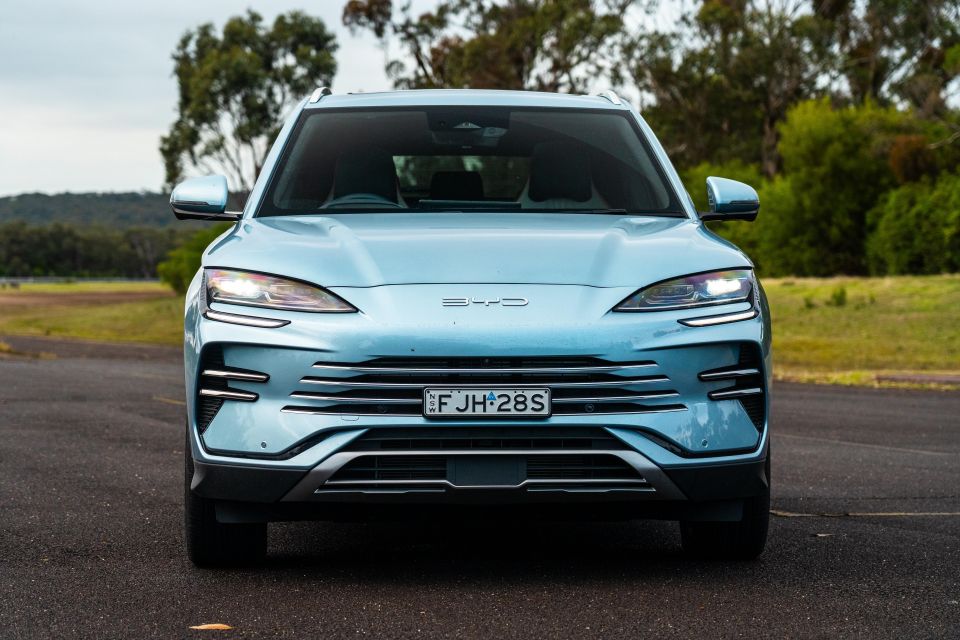
| Model | Price before on-road costs |
|---|---|
| 2024 BYD Sealion 6 Dynamic | $48,990 |
| 2024 BYD Sealion 6 Premium AWD | $52,990 |
To see how the BYD Sealion 6 lines up against the competition, check out our comparison tool.
Buy your new car without the stress. It's fast, simple and completely free.

Great service from Travis and team, second time I have used this business would not hesitate to recommend them to anyone
Craig C.
Purchased a Ford Ranger in Sunshine Coast, QLD
CarExpert helped Craig save $7,224 on his Ford Ranger, now let us save you on your next new car.
Get your BEST priceUnlike some of the brand’s electric models, the Sealion 6’s cockpit is fairly conventional.

It’s worth noting the Sealion 6 was first launched in the Chinese domestic market back in 2020 as the Song Plus, which is why some of the design is a little more conventional or old-school compared to the Seal electric sedan, for example.
The Sealion 6’s cabin will no doubt impress with its presentation on the showroom floor. There’s solid build quality, nice materials, and a general cohesion to the design and layout.
Our test car was fitted with the optional Grey and Blue interior upholstery, which is more in line with the colour scheme offered in the Atto 3 and Seal than the standard Black and Brown. Personally, I prefer the latter.
The straight lines and upright dashboard fascia are very clean, and increase the impression of space and width. All of the touch points are trimmed in nice leather or leatherette and the stitching and piping accents are quite nice, too.
Ahead of the driver and behind the chunky steering wheel is a 12.3-inch digital instrument cluster similar in presentation to the unit in the Seal sedan, only integrated into a more conventional cowl.

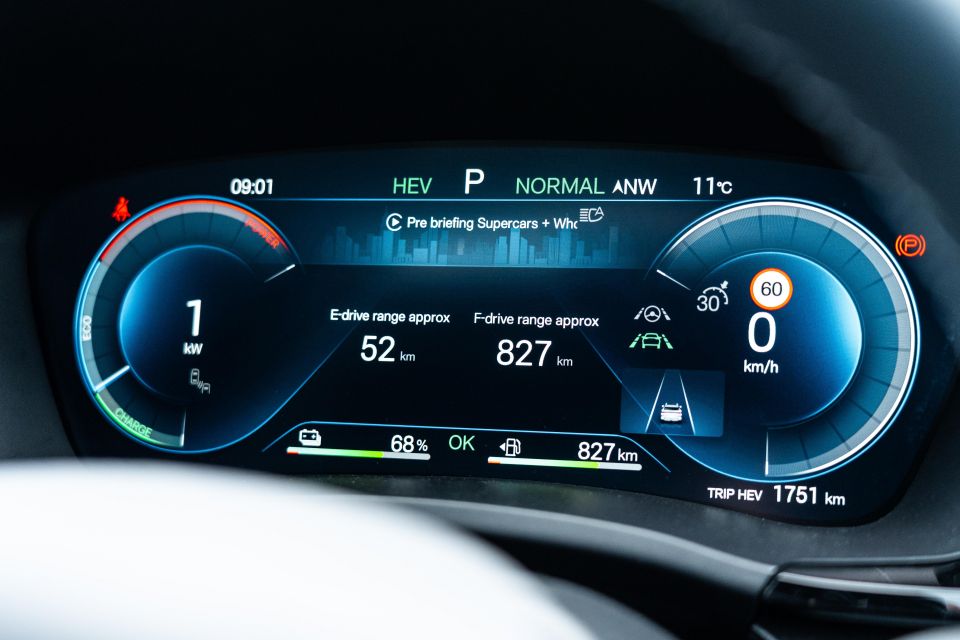
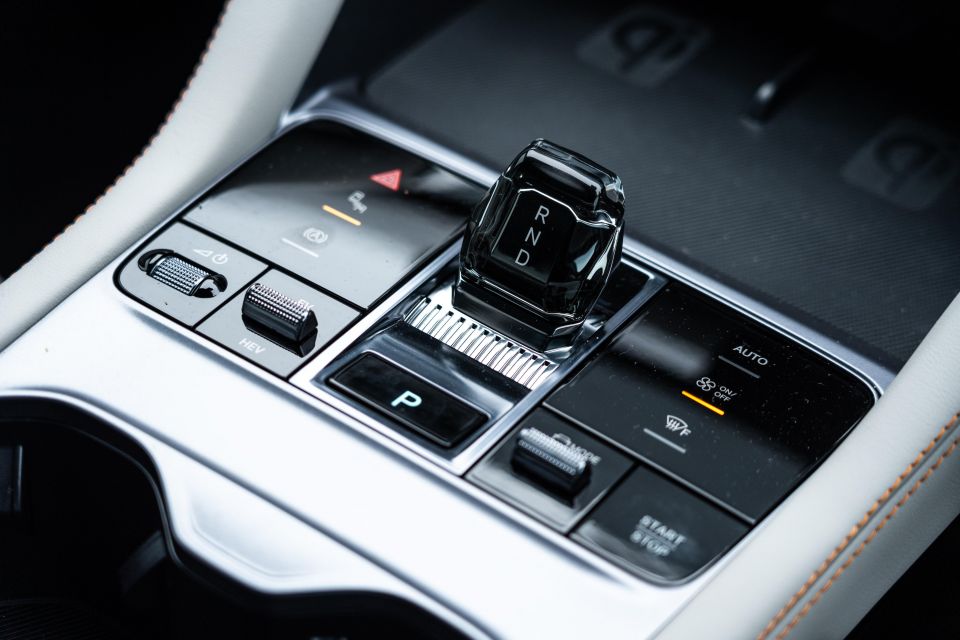
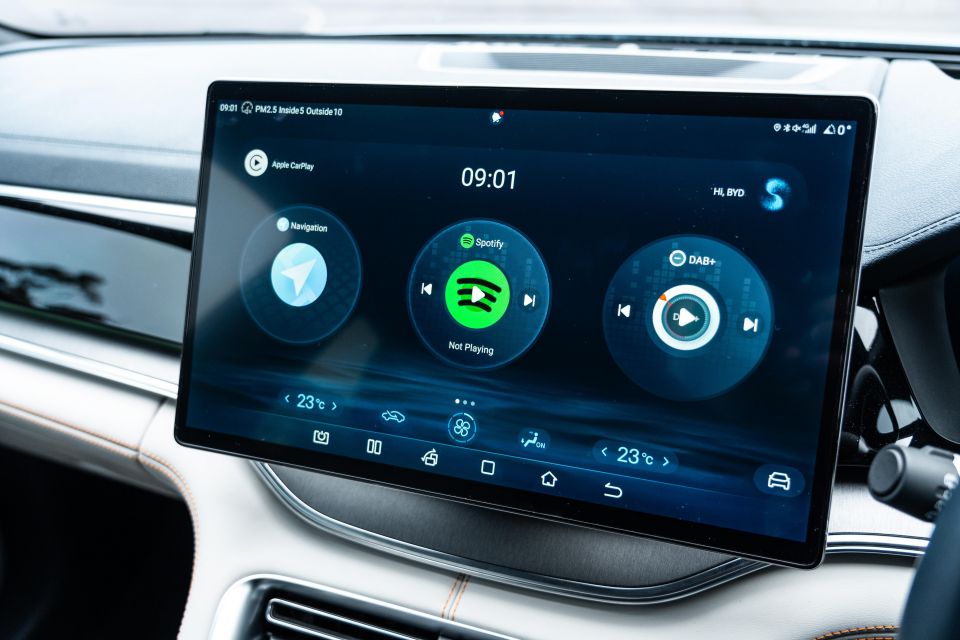
It has a translucent finish and offers pretty high resolution and quick refresh rates, with bright colours and smooth animations. The graphics appear a bit simple and dated in areas, but it all works well and displays the information you need in your line of sight.
There are a couple of different layouts and plenty of widgets to cycle through, but it’s nowhere near as customisable as a Volkswagen Group product or even the digital panel in the Mitsubishi Outlander and Nissan X-Trail.
Then there’s the 15.6-inch central touchscreen, which like other BYD models can be rotated between portrait and landscape orientations at the touch of a button – a neat party trick which will make your passengers go ‘wow!’
It’s a shame you can’t rotate the screen when using wireless Apple CarPlay or Android Auto, though otherwise like the driver’s display it offers high quality graphics, bright and rich colours, as well as quick loading times.
Speaking of wireless Apple CarPlay, my iPhone 15 Pro Max hooked up quickly most of the time but at times needed to be selected via the Apple CarPlay icon on the display menu after start-up. It otherwise works well and takes up the whole display which is pretty neat.
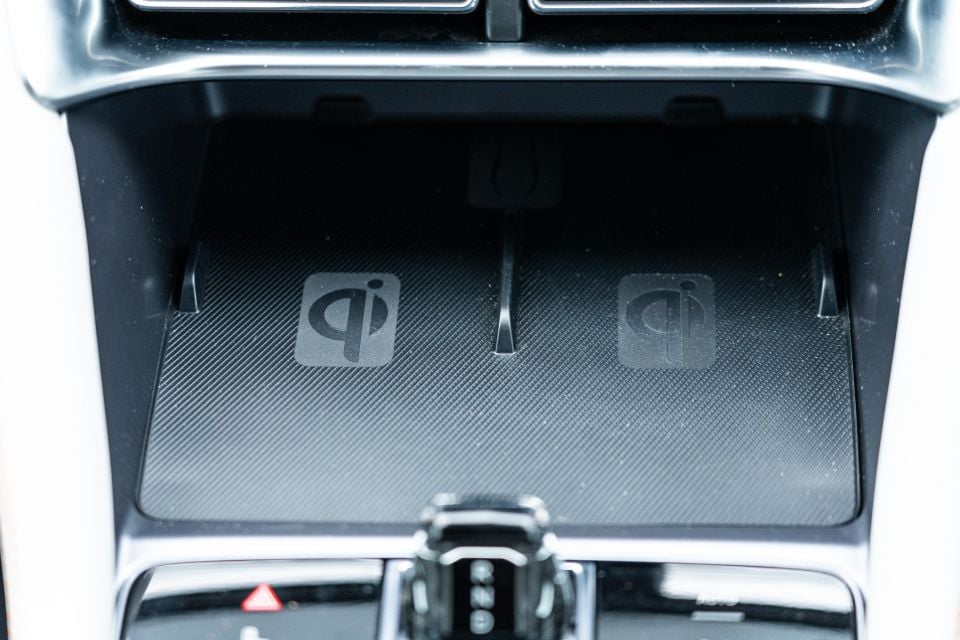

The 10-speaker Infinity-branded audio system does a good job, though didn’t feel like it had quite the depth of some rivals with higher-end systems from Bose, JBL, or Harman Kardon.
It also offers built-in Spotify and Amazon Music, in addition to a karaoke app – which could be dangerous for Uber drivers. Rounding out the features list are Bluetooth phone connectivity, embedded satellite navigation, over-the-air software updates, and AM/FM/DAB radio. It’s hooked up to a 10-speaker Infinity premium audio system as standard.
Storage is generally pretty good for a vehicle that will be carting around families, from the dual smartphone chargers up front with grippy base to the large cupholders, cubby under the centre armrest, and decent door bins that can hold bottles and other items.
I also want to call out the solid switchgear and toggles, which contribute to an uplift in ambience that makes the Sealion 6 not just “nice for a Chinese car”, but nice relative to established rivals from Japan, Korea, and Europe.
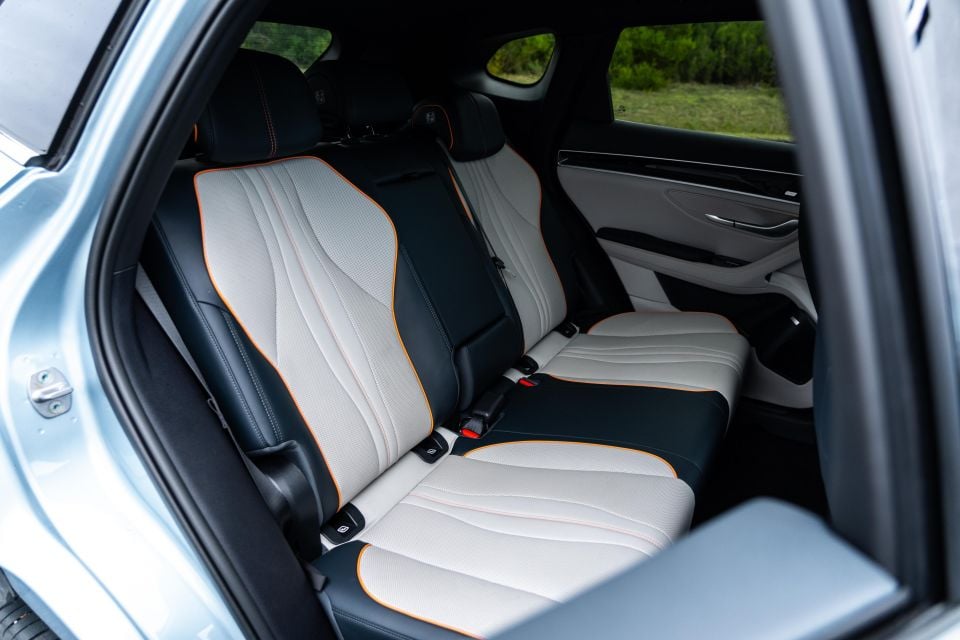
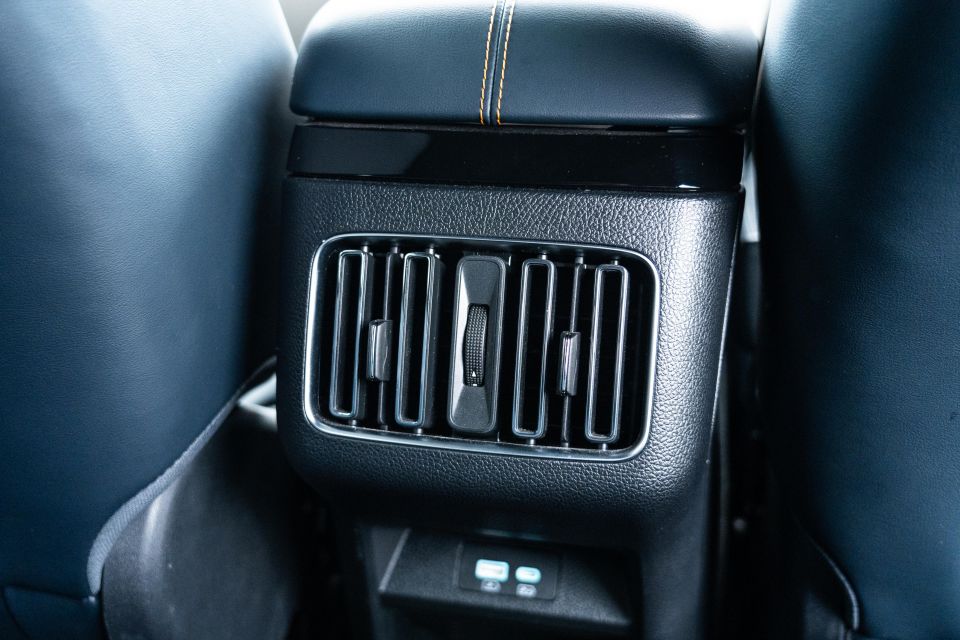
As for the second row, two full-sized adults will have plenty of space back there, even with the panoramic glass sunroof.
I’m a little over 6’1 and had plenty of headroom despite the panoramic roof, as well as above average leg- and knee-room. You could squeeze three abreast, but the raised centre position probably wouldn’t be comfortable for a full-sized adult.
The thoughtful and eye-catching trim extends to the rear, including the dual-tone colour scheme, contrast piping and stitching, and high ratio of soft-touch surfaces. A number of rivals (including the Volkswagen Tiguan) revert to harder plastics on the rear doors to reduce costs.
Amenities include reclining backrests for the rear seats, a fold-down central armrest with cupholders, directional rear air vents, USB-A and USB-C charge ports, as well as ISOFIX and top tether points for child seats.
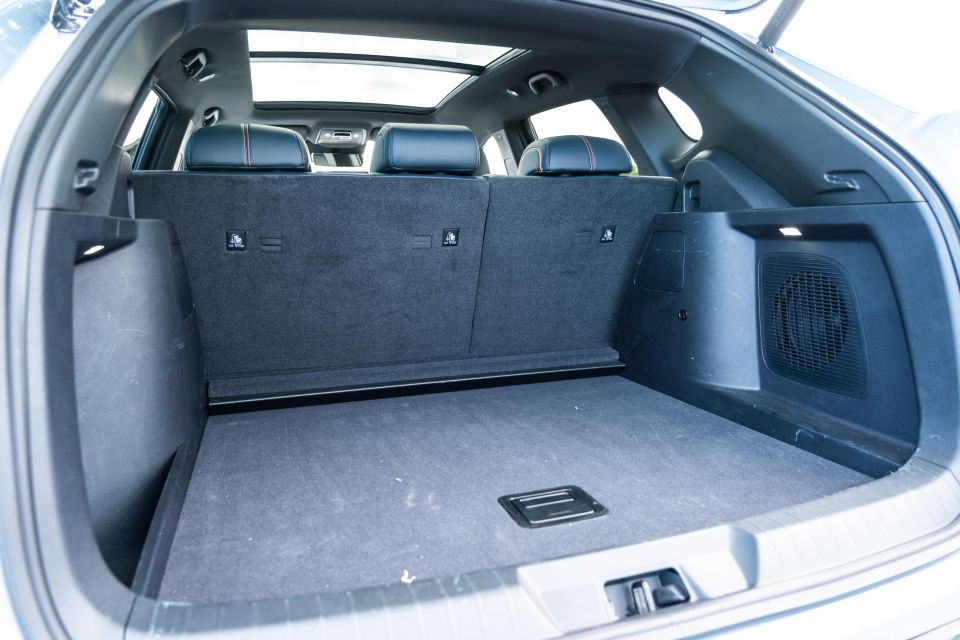
BYD quotes a boot capacity of 425 litres (minimum) with the rear seats in place, expanding to up to 1440L.
There’s no spare wheel of any kind in the Sealion 6. Instead, a tyre repair kit is standard equipment across the lineup.
| Dimensions | BYD Sealion 6 Premium AWD |
|---|---|
| Length | 4775mm |
| Width | 1890mm |
| Height | 1670mm |
| Wheelbase | 2765mm |
| Cargo capacity | 425 litres (5 seats) 1440 litres (2 seats) |
To see how the BYD Sealion 6 shapes up against its rivals, check out our comparison tool.
The Premium adds a turbocharger and a second electric motor to BYD’s DM-i plug-in hybrid system.
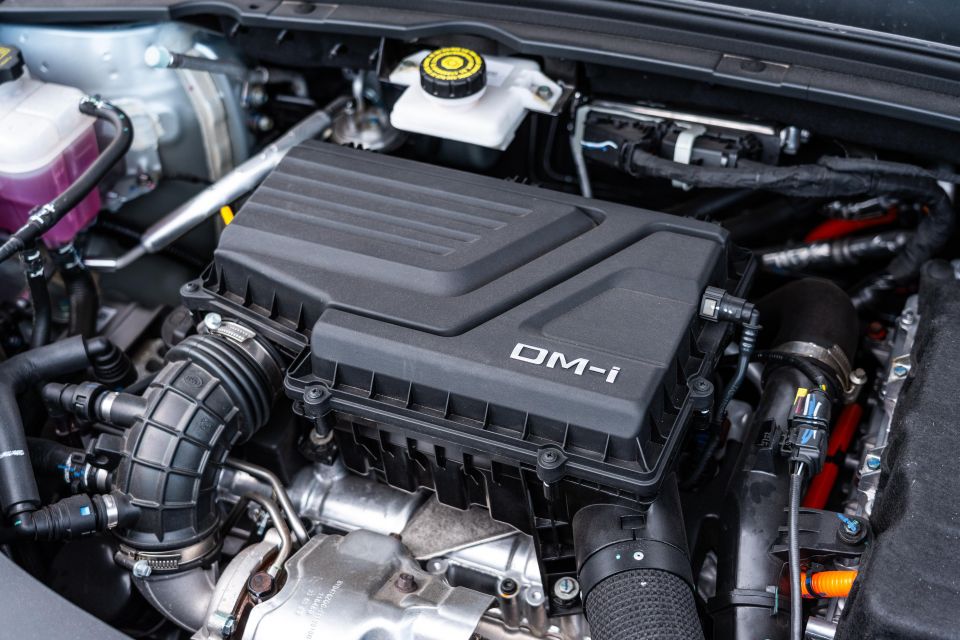
| Specifications | BYD Sealion 6 Premium AWD |
|---|---|
| Engine | 1.5L 4cyl turbo-petrol |
| Engine outputs | 96kW / 220Nm |
| Electric motor outputs | 150kW / 300Nm (front) 120kW / 250Nm (rear) |
| System outputs | 238kW / 550Nm |
| Battery | 18.3kWh LFP |
| Transmission | Single-speed, reduction gear |
| Driven wheels | e-AWD |
| Weight | 2100kg (kerb) |
| Fuel economy (claimed) | 1.4L/100km |
| Fuel economy (as tested) | 3.2L/100km |
| Electric driving range | 81 kilometres (claimed) |
| AC charging capacity | 7kW |
| DC charging capacity | 18kW |
| Fuel tank capacity | 60 litres |
| Fuel requirement | 95 RON |
| CO2 emissions | 32g/km |
| Emissions standard | N/A |
| Braked tow capacity | 1300kg |
To see how the BYD Sealion 6 shapes up against its rivals, check out our comparison tool.
I was singing the Sealion 6’s praises at the pre-production drive, and while it’s not quite as impressive in the real world on public roads it’s still competitive.
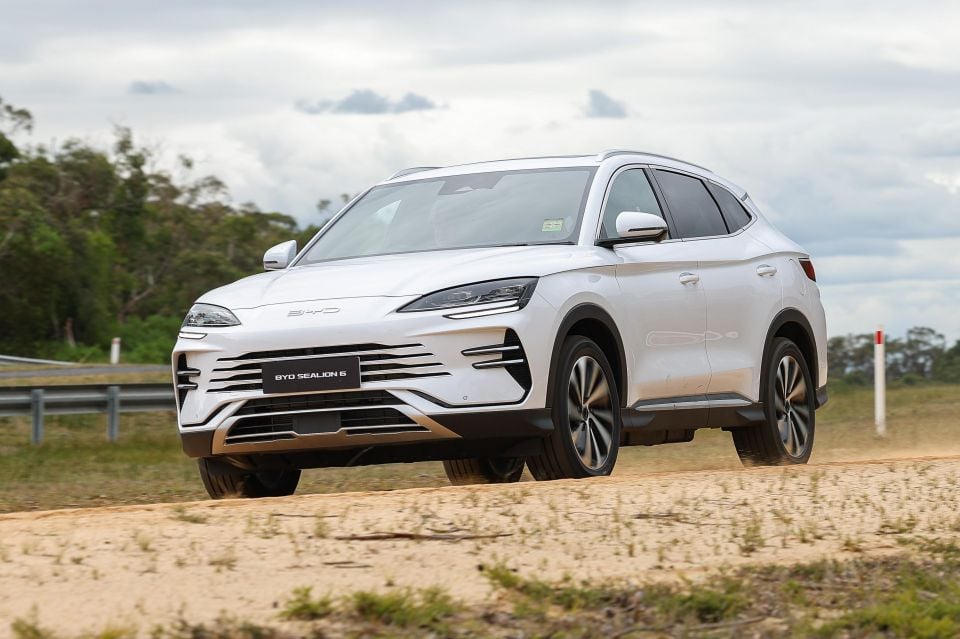
The Premium AWD boasts some solid numbers: 238kW/550Nm, 0-100km/h in 5.9 seconds, 81km driving range, and a combined driving range of 961 kilometres. It also uses a claimed 1.4/100km on the combined cycle.
In normal driving it doesn’t necessarily feel like an intimidating beast, as it offers very linear responses in most respects, from acceleration to steering.
With sufficient battery charge the Sealion 6 will default to EV mode, drawing upon the 150kW and 120kW e-motors for propulsion. It’s smooth and effortless, while also being impressively quiet and refined.
The softly-sprung suspension means the cabin is rarely upset by even sharp road surface imperfections in the city, but that has an adverse effect with body control, with the Sealion 6 having a propensity to, erm… porpoise on occasion.
Over successive hits and undulations, there’s a forward-backward motion in addition to the up-down motion from the suspension. It also takes one or two many movements to settle than would be satisfactory

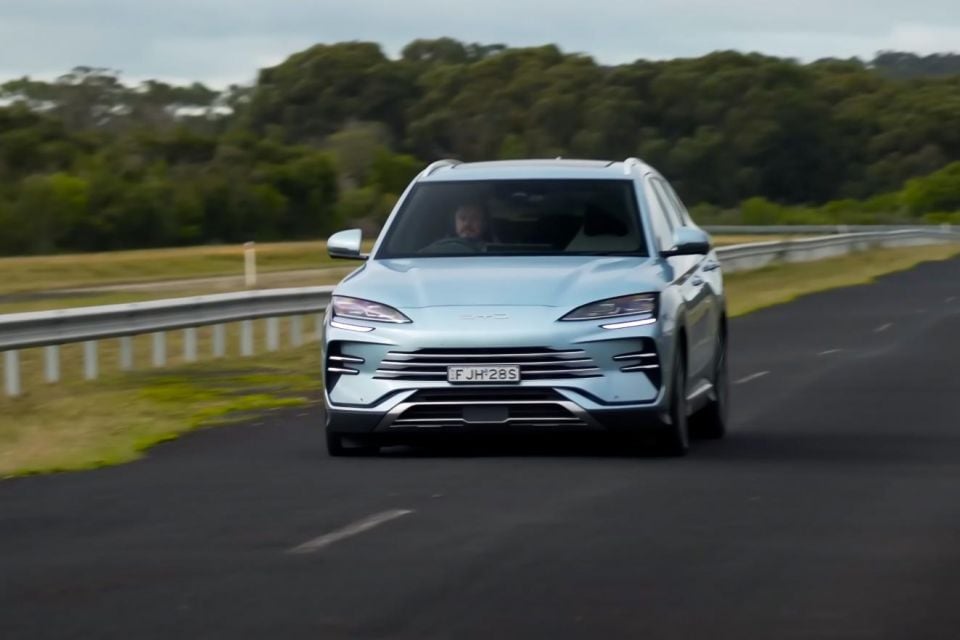
Further, it’s a bit too floaty at higher speeds over undulations – watch Paul Maric drive over the sine waves at Lang Lang in the video up top to get a feel for what I mean.
It means there’s a bit of body roll in corners, and the Sealion 6 doesn’t feel particularly keen to drive through successive corners at pace – although in reality, it’s focused on safely carting families around the urban jungle. By that metric, I think it almost nails its intended purpose.
This is perhaps where the Sealion 6 is let down compared to most rivals, particularly those with localised ride and handling setups that cater for Australia’s wide array of road conditions.
Naturally, we expect this to be improved with running changes in the future. It wouldn’t be the first time a manufacturer has implemented suspension changes following feedback (cough, Hyundai Ioniq 5).
Otherwise, the Sealion 6 is pleasant to drive everyday. I spent plenty of time driving to and from work in peak-hour traffic, travelling from Melbourne’s eastern suburbs through the city to get to the office – it’s great for this kind of stuff.
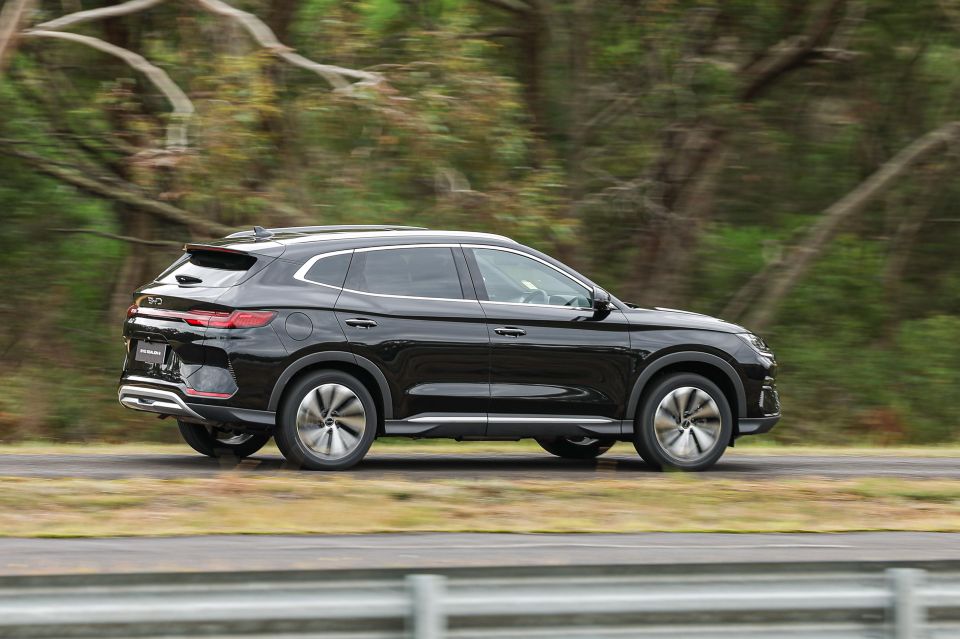
Unlike some plug-in hybrids there’s plenty of grunt from the e-motors to not just get this 2.1-tonne family SUV moving but also with decent pace. It’s effortless and reasonably quick when you sink your boot in.
BYD’s DM-i ‘Super Hybrid’ system can run as an EV, series hybrid, or parallel hybrid, and aims to operate as an EV first and then leans on the on-board petrol engine to assist when low on battery or under heavy loads.
EV Mode is the default, and basically sees the vehicle operate as an electric vehicle until usable zero emissions range runs out. The Sealion 6 offers 92km of range in Dynamic guise and 81km for the Premium. Further, the company told us the vehicle will retain around 25 per cent of battery capacity to run as a hybrid when usable EV range reaches 0km.
HEV Series Mode uses the petrol engine to charge the battery while the e-motor(s) drive the car. The aim is to add to the vehicle’s combined driving range (ICE + EV), and to keep the drive battery juiced to slip back into EV mode when it can.
Finally, HEV Parallel Mode continues to prioritise EV driving, but will use the petrol motor to cut in for maximum performance. Example conditions quoted included overtaking and towing – speaking of, the Sealion 6 offers a maximum 1300kg towing capacity in Premium AWD guise (750kg Dynamic).
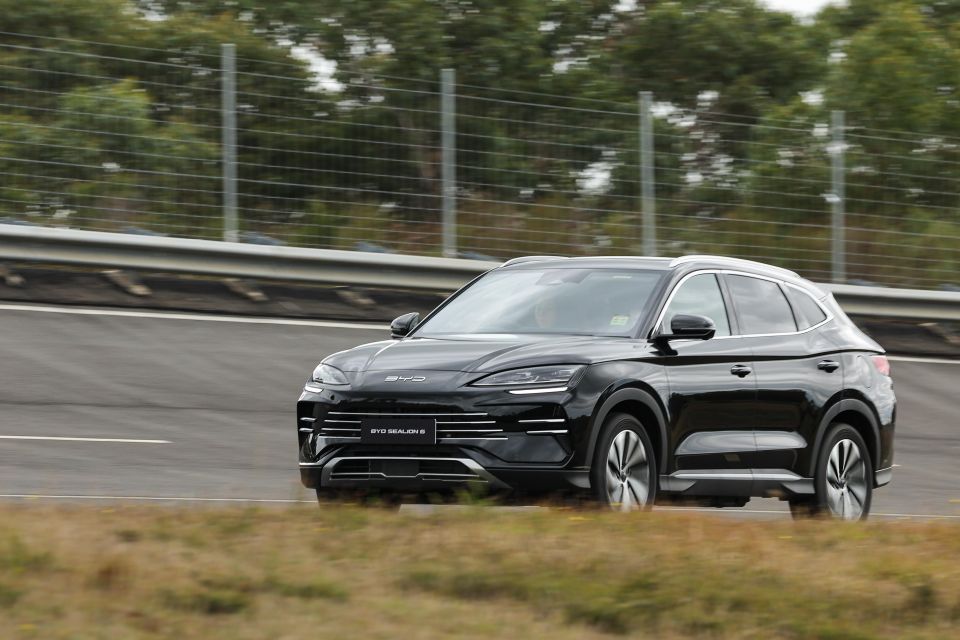
The lighter steering feel makes tight manoeuvres a breeze, and there’s a bright and clear surround camera system with 3D modelling which means there’s no excuse for touch parks or gutter rashed alloys.
At speed – provided you’re not on an undulating country road – the Sealion 6 makes for a comfortable and quiet highway tourer with minimal drivetrain noise nor intrusion from tyre roar or wind whistle.
The BYD’s driver assistance suite is amongst the best of the Chinese brands. Adaptive cruise control and lane centring facilitate a semi-autonomous highway mode that worked pretty well if for the odd overzealous jerking of the wheel.
Unlike a number of Chinese brands there didn’t appear to be any obtrusive and overbearing beeps and bongs in the Sealion 6, which is cause for praise.
Perhaps one odd complaint is the hang up button for phone calls is the same button you use to cycle through menus in the instrument cluster, so I accidentally hung up on people a few times…
Two grades are available in Australia – Dynamic and Premium.

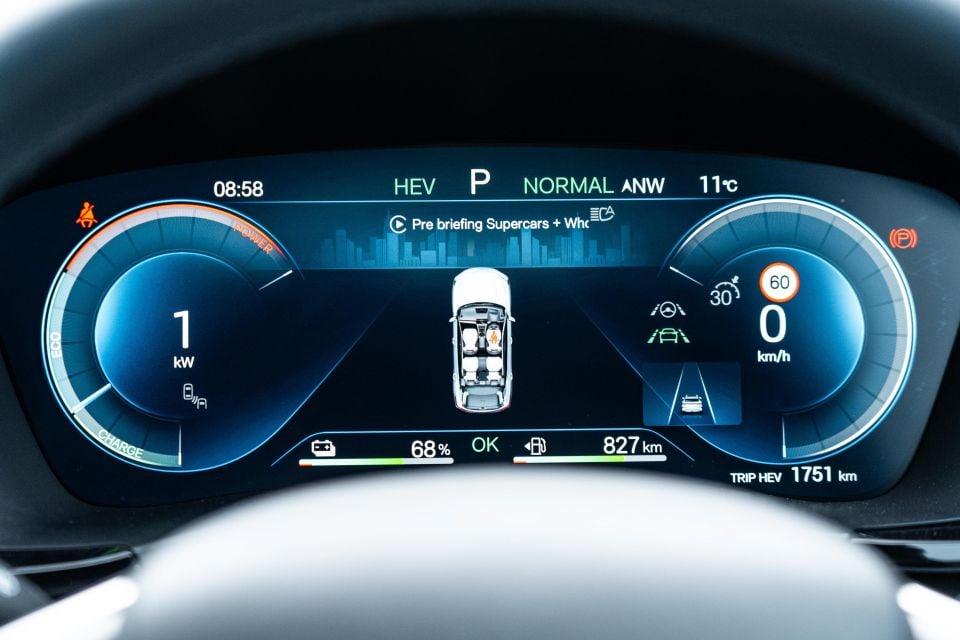
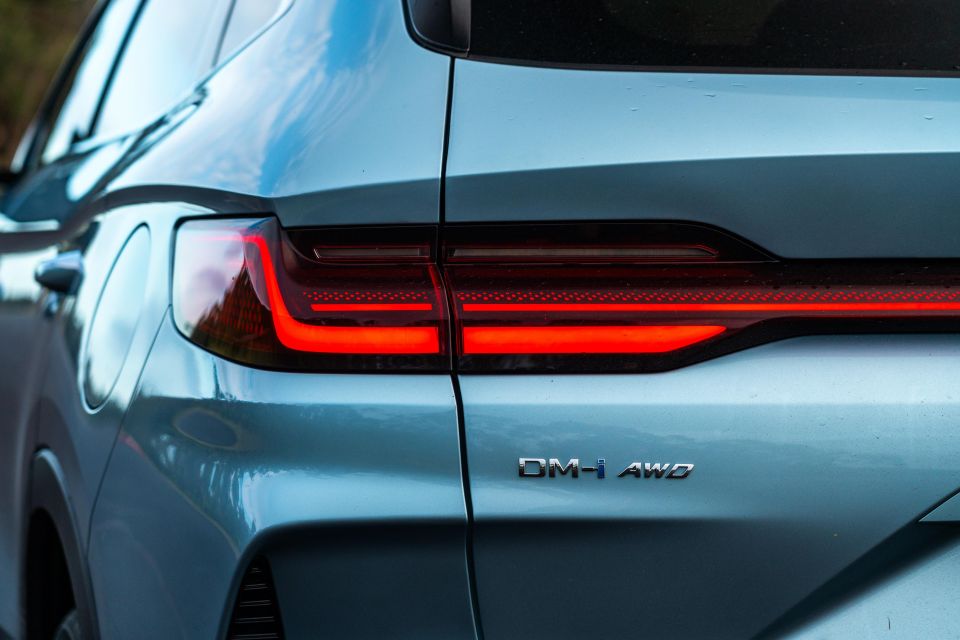
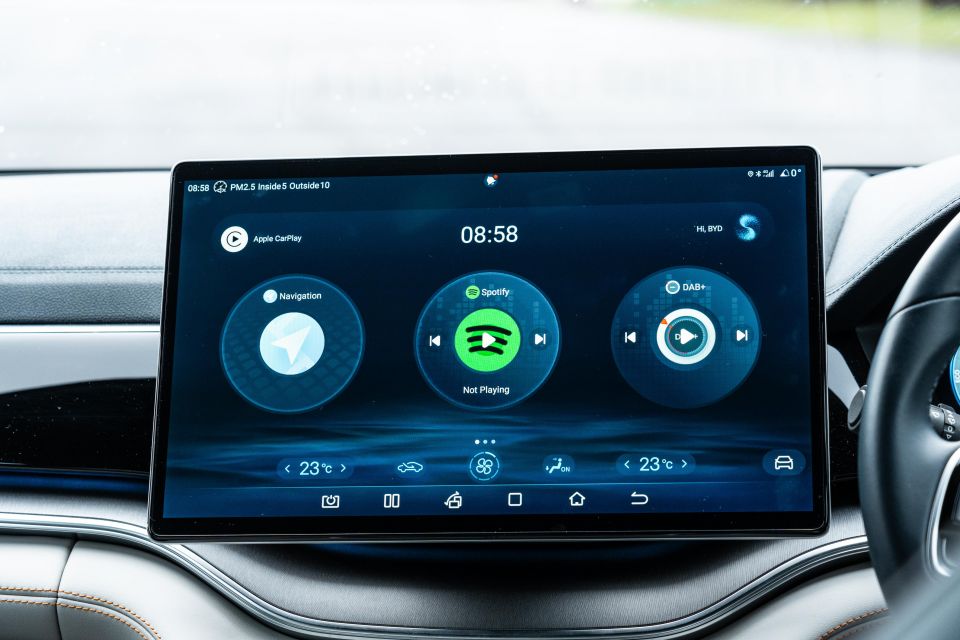
Where expert car reviews meet expert car buying – CarExpert gives you trusted advice, personalised service and real savings on your next new car.
Sealion 6 Dynamic highlights:
Exterior
Interior
Entertainment
Light
Comfort and Convenience
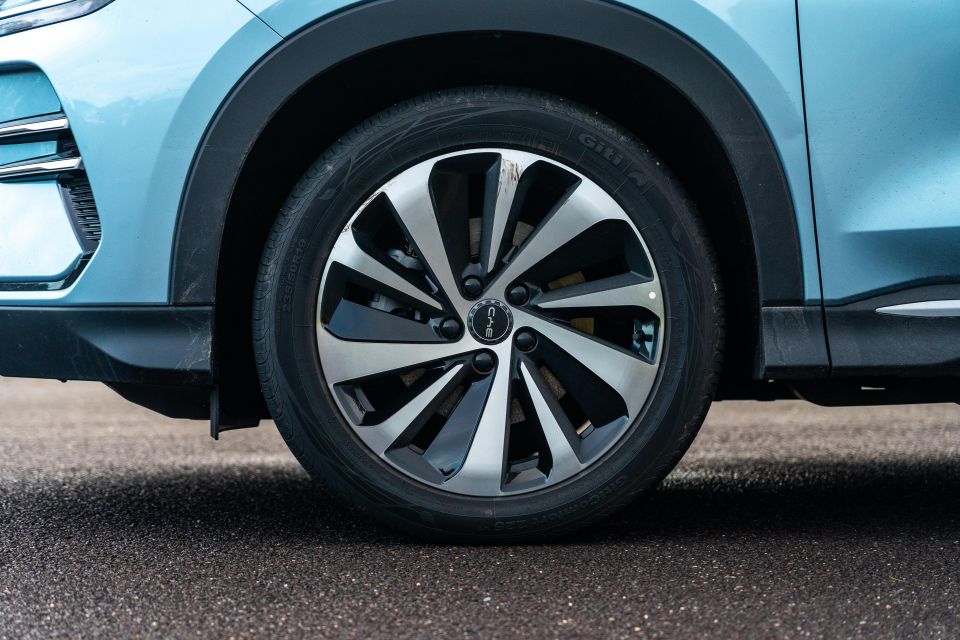
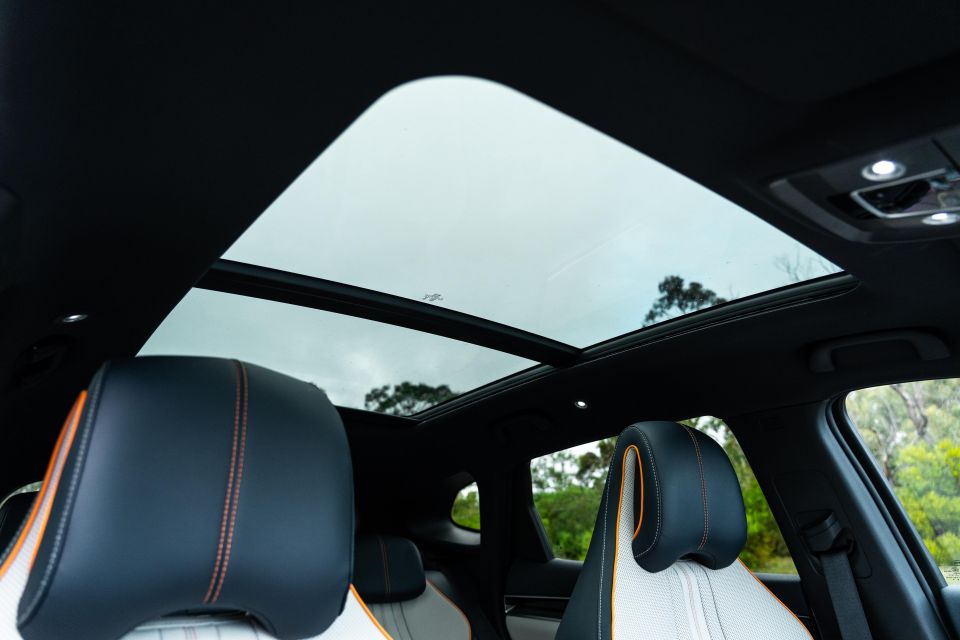
Sealion 6 Premium adds:
Chassis
Safety and Security
Interior
The Sealion 6 hasn’t been awarded an ANCAP safety rating yet, though BYD says a five-star result is “expected”.
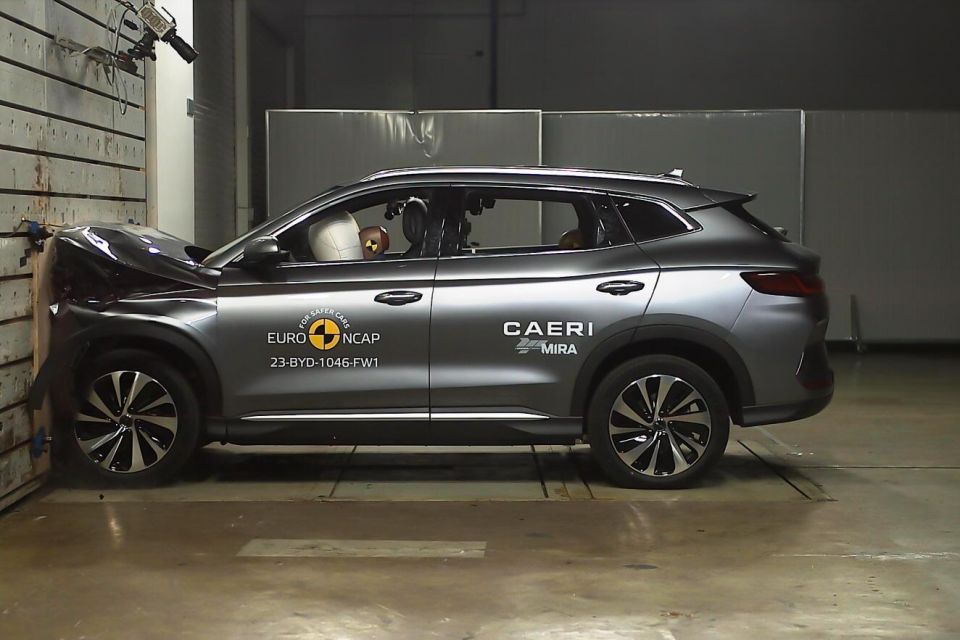
The confident response could be because the all-electric BYD Seal U achieved a five-star Euro NCAP result in 2023, including a 90 per cent score for adult occupant protection, 86 per cent for child occupant protection, 83 per cent for vulnerable road users, and 77 per cent for safety assist.
Should there be minimal discrepancies in structural and crash test data, the Sealion 6 PHEV could very well achieve a similar result as we’ve seen with other nameplates supporting multiple powertrain types.
Standard safety features include:
The BYD range is covered by a six-year, 150,000km vehicle warranty and an eight-year, 160,000km battery warranty.
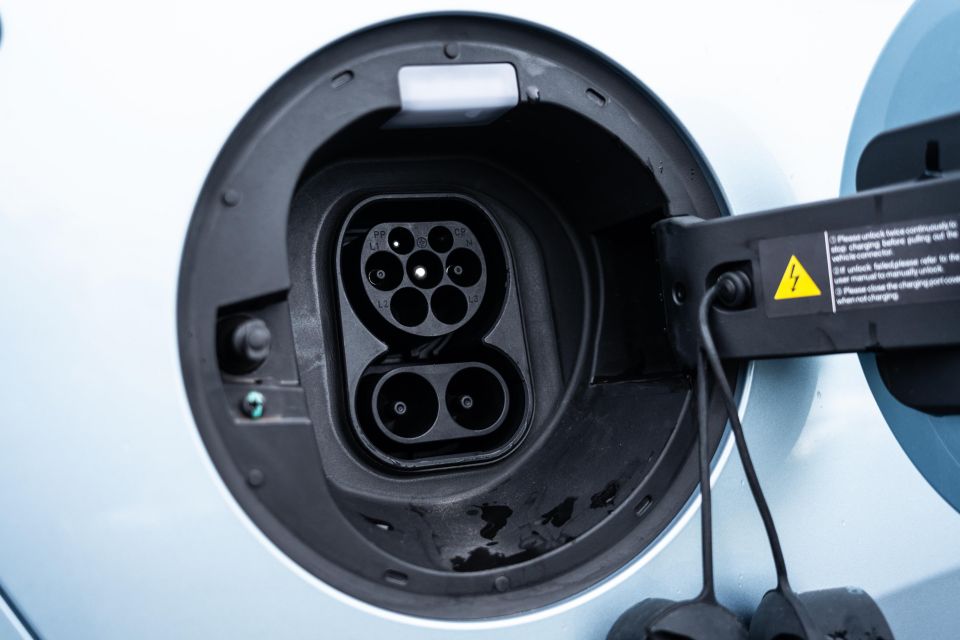
| Running costs | BYD Sealion 6 |
|---|---|
| Warranty | 6 years or 150,000 kilometres |
| Roadside assistance | 12 months |
| Service intervals | 12 months or 20,000 kilometres |
| Capped price servicing | Up to 132 months or 220,000km |
| Total capped price service cost | $1648 (5 years) |
I also attempted DC charging and saw the Sealion 6 would sit happily at its 18kW capacity shortly after commencing charging. According to my Evie charging receipt the Sealion 6 regained 11.965kWh in 41 minutes, at a cost of $6.94.
That returned the battery to around 80 per cent capacity from around 25 per cent where the Sealion 6 has no usable EV range and then operates as a hybrid.
Buy your new car without the stress. It's fast, simple and completely free.

Great service from Travis and team, second time I have used this business would not hesitate to recommend them to anyone
Craig C.
Purchased a Ford Ranger in Sunshine Coast, QLD
CarExpert helped Craig save $7,224 on his Ford Ranger, now let us save you on your next new car.
Get your BEST priceThe BYD Sealion 6 has a lot to offer, and I won’t be surprised if it really starts to take off on the sales charts.
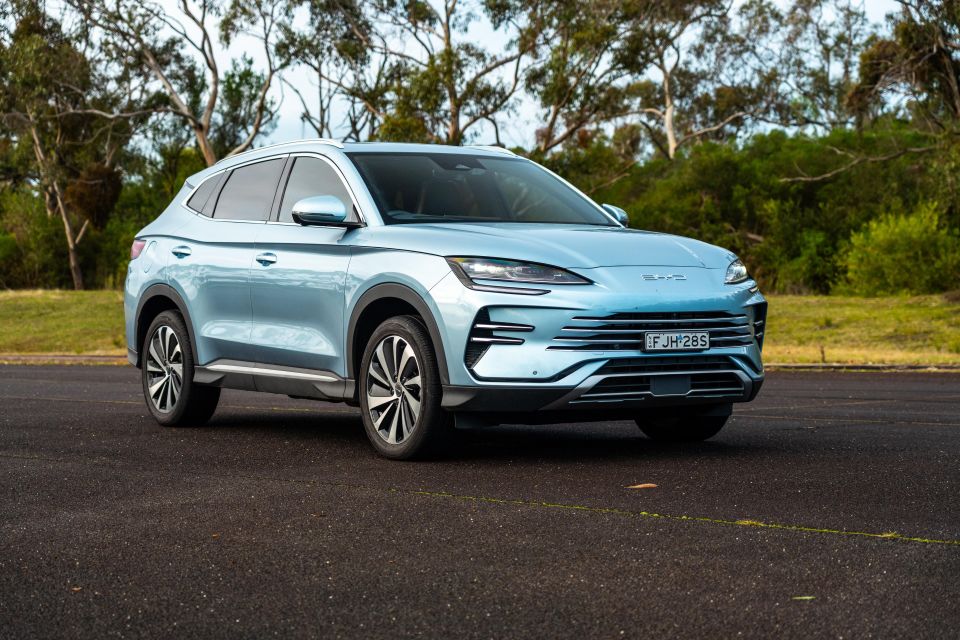
Where the Atto 3 is a bit small and the Seal sedan offers a body type not a lot of families are buying, the Sealion 6 blends a practical SUV package with a capable plug-in hybrid system that should dispel any range anxiety fears.
Much like its sole direct rival in the Mitsubishi Outlander Plug-in Hybrid EV, the Sealion 6 offers enough range to be driven predominantly in EV mode, and easily qualifies for tax breaks on novated leases while being substantially cheaper than its Japanese rival.
It’s so sharply priced it lines up against mid- and high-spec versions of non-plug-in rivals like the Toyota RAV4 Hybrid and Hyundai Tucson Hybrid, while offering substantial EV driving range and the eligibility for the FBT exemption.

It’s better than the outgoing MG HS Plus EV, and the next-generation MG PHEV is still some time away. For now, the Sealion 6 has this part of the market to itself, given the most affordable Outlander PHEV is $10,000 more than the base BYD.
Smooth and refined, with an achievable EV range and strong value for money are key selling points, as is its practical interior with family-friendly space and cargo-carrying capacity.
I’d just be mindful about the soft and floaty ride if you tour undulating country roads, and I’d consider going for the entry-level Dynamic with its superior EV range if you don’t need the Dynamic’s performance. I’ll also note the quoted boot capacity is smaller than most rivals, but it’s not shocking.
But all told it could make a lot of sense if you’re in the market for an electrified mid-size family SUV. Get in quick and you could be one of the first 3000 customers to get a free home wall charger with your purchase – more on that here.
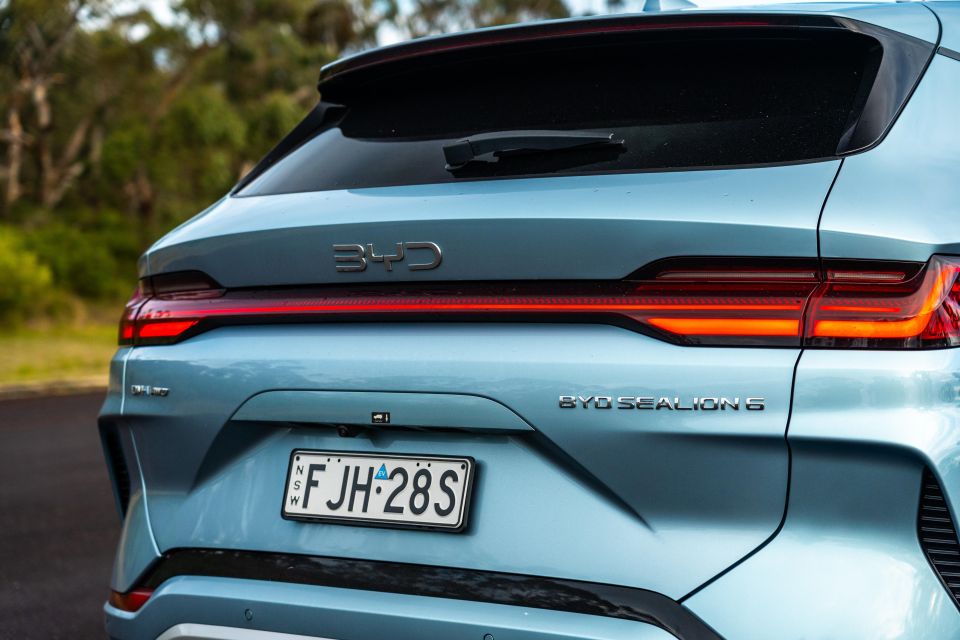
Click the images for the full gallery
MORE: Buy a BYD Sealion 6 MORE: Everything BYD Sealion 6
Where expert car reviews meet expert car buying – CarExpert gives you trusted advice, personalised service and real savings on your next new car.
James is an automotive journalist based in Melbourne, Australia. Before joining CarExpert.com.au in 2020, James has worked at leading auto media outlets including Carsales and CarAdvice, as well as at Pulse agency for Ford Australia's communications team. In 2019 James made Mumbrella's 'Top 20 most prolific web authors in Australia' list after publishing 1,360 articles between March 1, 2018 and February 28, 2019 for CarAdvice. James is also an Ambassador for Drive Against Depression – an Australian charity whose mission is to support mental wellness through the freedom of driving and a shared love of cars.


Max Davies
1 Month Ago


Andrew Maclean
18 Days Ago


James Wong
15 Days Ago


Max Davies
14 Days Ago


Paul Maric
11 Days Ago


James Wong
8 Days Ago